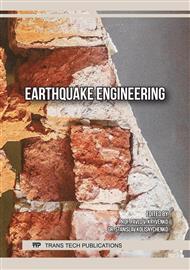p.1
p.11
p.21
p.37
p.45
Laboratory Testing and Numerical Analysis on Reinforced Concrete Frames with Prefabricated Cellular Lightweight Concrete (CLC)
Abstract:
In general, buildings can be classified into Engineering buildings and Non-engineering buildings. Non-engineering building is a simple building such as a residential house that does not carry out structural calculations. Non-engineering buildings are very susceptible to lateral loads such as earthquakes which can cause collapse. Therefore, research is carried out in the form of laboratory tests and numerical tests for reinforced concrete frames filled with prefabricated cellular lightweight concrete (CLC). In this study, two specimens were used, namely an empty frame and a reinforced concrete frame filled with prefabricated CLC. In the laboratory test, it was analyzed by means of a cyclic load test, while in the numerical test the first specimen was made an open frame model and the second infill wall was made as an equivalent diagonal strut. Both of these models were analyzed using the SAP 2000 application version 22 by applying pushovers. The results showed that there were differences in laboratory tests and numerical tests. Therefore, a correction value for the numerical test results is needed to approach the value of the numerical test results.
Info:
Periodical:
Pages:
37-43
Citation:
Online since:
June 2023
Price:
Сopyright:
© 2023 Trans Tech Publications Ltd. All Rights Reserved
Share:
Citation:




